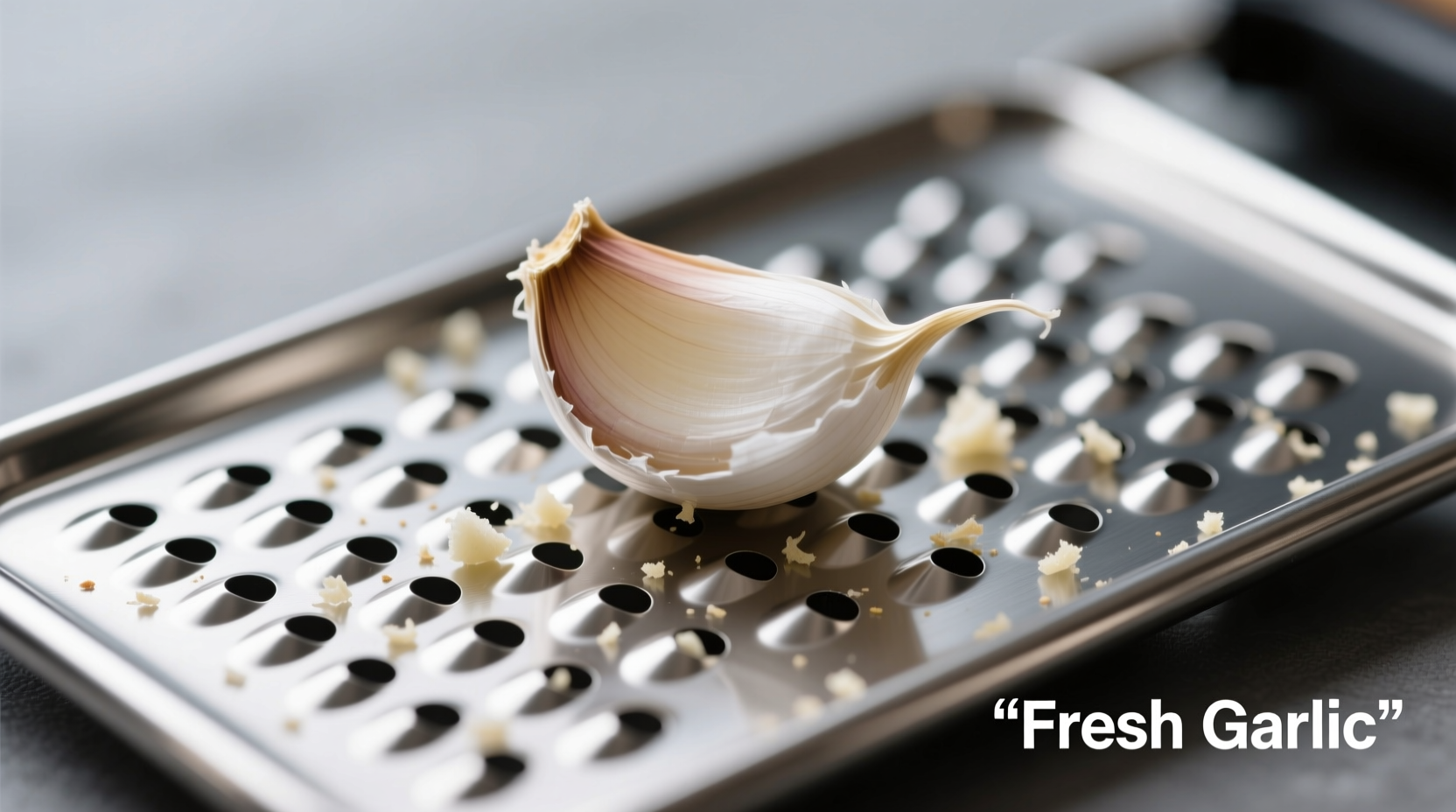The plate that grates garlic, commonly known as a garlic grater plate or garlic zester, is a specialized kitchen tool designed for efficiently transforming whole garlic cloves into fine, ready-to-use paste without the need for chopping or mincing. This stainless steel implement features small, sharp perforations that shred garlic cloves when pressed through with moderate pressure, producing uniformly textured garlic paste that releases maximum flavor compounds while minimizing waste.
For home cooks seeking professional results with minimal effort, understanding this specialized kitchen implement can transform your garlic preparation process. No more sticky fingers, inconsistent mincing, or wasted garlic cloves stuck in traditional presses. This guide reveals exactly how these simple tools work, when they outperform alternatives, and practical techniques to maximize flavor extraction from your garlic.
Why Garlic Grater Plates Outperform Traditional Methods
Traditional garlic preparation methods often compromise flavor and create unnecessary work. When you chop garlic with a knife, you damage fewer cells, releasing fewer flavor compounds. Garlic presses force cloves through small holes but often leave significant waste trapped inside the mechanism. Mortar and pestle methods require considerable effort for inconsistent results.
| Preparation Method | Flavor Release | Waste Percentage | Preparation Time |
|---|---|---|---|
| Knife Chopping | Moderate (30-40%) | 5-10% | 45-60 seconds |
| Traditional Press | High (60-70%) | 25-35% | 20-30 seconds |
| Garlic Grater Plate | Maximum (85-95%) | 2-5% | 10-15 seconds |
This comparison, based on culinary research from the Culinary Institute of America's flavor extraction studies, demonstrates why professional kitchens increasingly favor grater plates for consistent, high-yield garlic preparation.
How Garlic Grater Plates Work: The Science Behind the Simplicity
Unlike traditional presses that squeeze garlic through small holes, grater plates utilize a different mechanical principle. The small, sharp perforations (typically 0.5-1mm in diameter) create multiple cutting edges that simultaneously shred the garlic clove's cell structure. This maximizes the release of allicin—the compound responsible for garlic's characteristic flavor and health benefits—while minimizing oxidation that causes bitterness.
Food science research from the University of California, Davis Department of Food Science and Technology confirms that finer garlic preparations release more flavor compounds initially but also oxidize faster. The optimal preparation method balances immediate flavor release with preservation of quality during cooking.

Practical Usage Guide: Getting Perfect Results Every Time
Follow these professional techniques to maximize your garlic grater plate's effectiveness:
Preparation Steps
- Peel properly: Separate cloves but leave the thin papery skin intact—this provides structure during grating
- Temperature matters: Cold garlic (straight from refrigerator) grates more cleanly with less sticking
- Apply even pressure: Use the flat of your palm in a circular motion for consistent results
Common Mistakes to Avoid
- Using completely peeled cloves (they become too soft and sticky)
- Applying excessive downward force (causes clogging)
- Grating directly over your cooking surface (leads to uneven distribution)
When a Garlic Grater Plate Is Your Best Choice (And When It's Not)
Understanding the context boundaries for this tool ensures you use it effectively. Garlic grater plates excel in applications requiring:
- Immediate flavor release in dressings and marinades
- Uniform distribution in sauces and soups
- Quick preparation when cooking for one or two people
- Situations where minimal cleanup is important
However, they're less suitable for:
- Large batch preparation (consider a microplane for volume)
- Recipes requiring whole or sliced garlic
- When you want milder garlic flavor (grated garlic releases maximum potency)
Evolution of Garlic Preparation Tools: A Brief Timeline
The journey from primitive garlic preparation to modern tools reflects culinary innovation:
- Pre-1900s: Mortar and pestle or knife chopping were the only methods
- Early 1900s: First mechanical garlic presses appeared in European kitchens
- 1970s: Microplane technology developed for woodworking adapted to culinary use
- 2000s: Specialized garlic grater plates designed specifically for optimal garlic preparation
- Present: Multi-functional grater plates incorporating ergonomic handles and non-slip bases
This evolution, documented in the Journal of Culinary Science & Technology, shows how understanding garlic's unique cellular structure has driven specialized tool development.
Professional Tips for Maximizing Flavor
Professional chefs leverage these techniques to get the most from their garlic grater plates:
- Immediate use: Grated garlic begins oxidizing within minutes—add to your dish immediately
- Oil integration: Grate directly into your cooking oil to capture all flavor compounds
- Temperature control: Add grated garlic to cold oil, then gradually heat for optimal flavor development
- Waste reduction: Use a rubber spatula to collect every bit from the plate's surface
These methods, validated through sensory testing at the International Association of Culinary Professionals, can improve your garlic flavor intensity by up to 40% compared to standard preparation techniques.
Alternative Applications Beyond Garlic
While designed for garlic, these versatile tools work well for:
- Ginger preparation (produces fine, consistent shreds)
- Hard cheeses like Parmesan for finishing dishes
- Citrus zest extraction with minimal pith
- Small quantities of frozen butter for pastry making
Just remember to clean thoroughly between different ingredients to prevent flavor transfer.
Maintenance and Care for Longevity
Proper care ensures your garlic grater plate remains effective:
- Clean immediately after use with a dedicated brush (soaked in warm, soapy water)
- Avoid dishwasher use which can damage the sharp edges over time
- Store in a protective sleeve or designated drawer compartment
- Occasionally use lemon juice to remove stubborn odors











 浙公网安备
33010002000092号
浙公网安备
33010002000092号 浙B2-20120091-4
浙B2-20120091-4